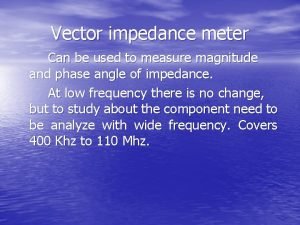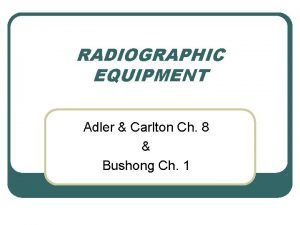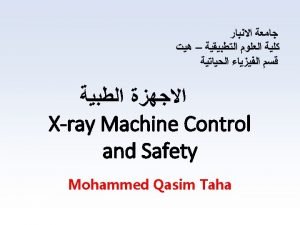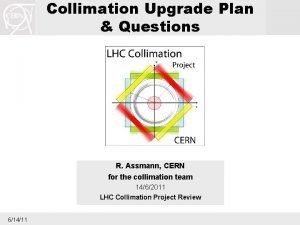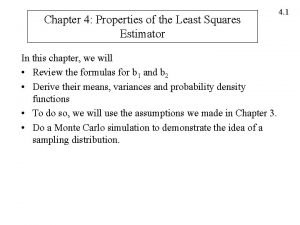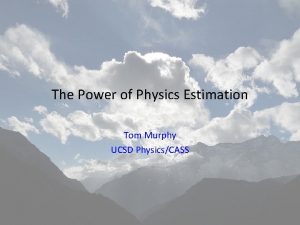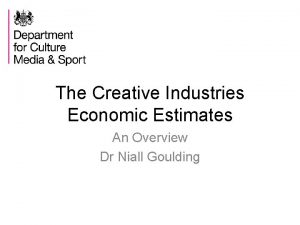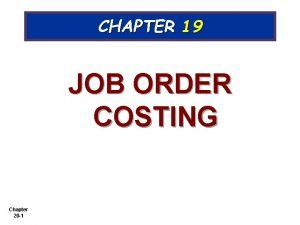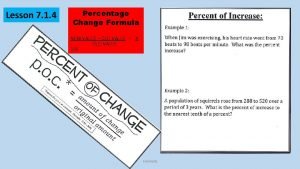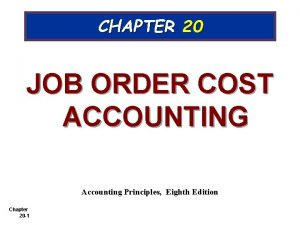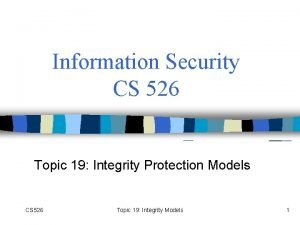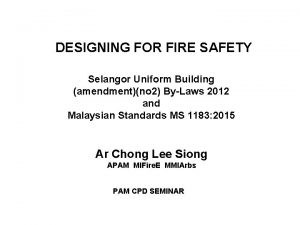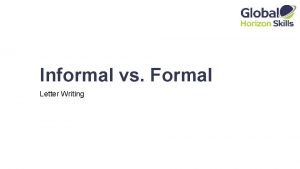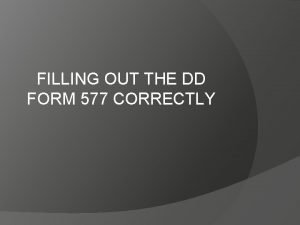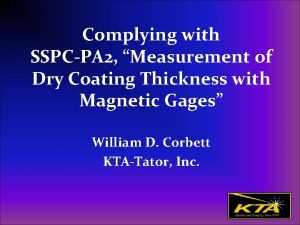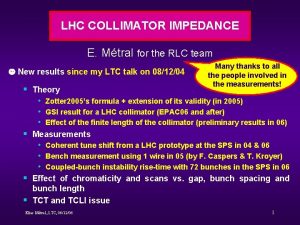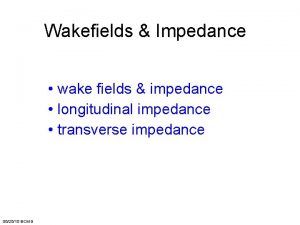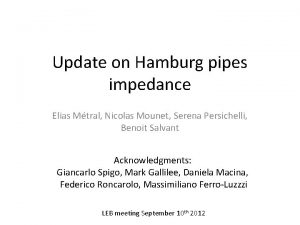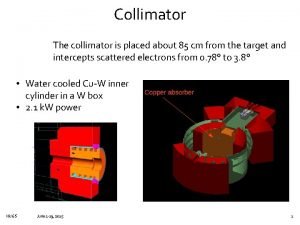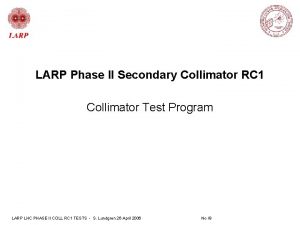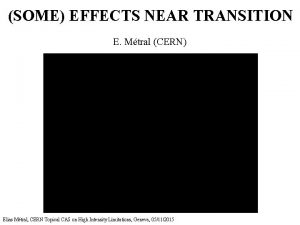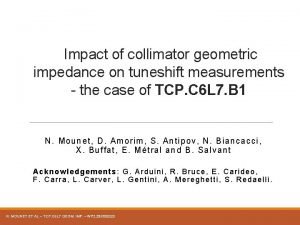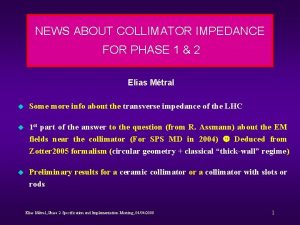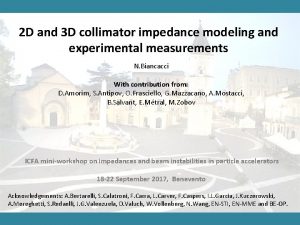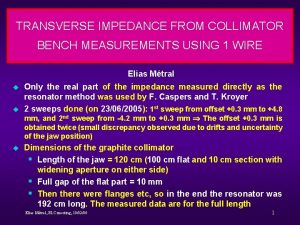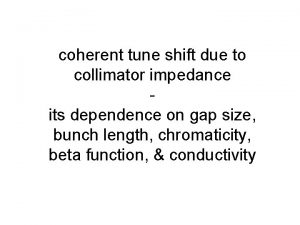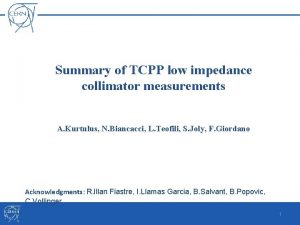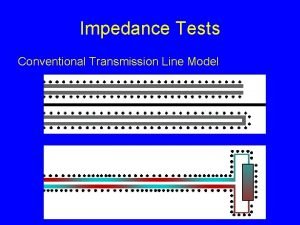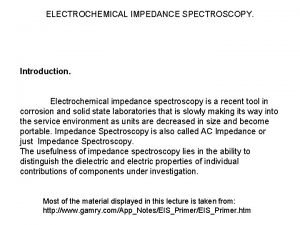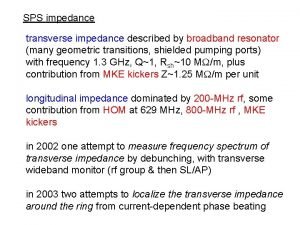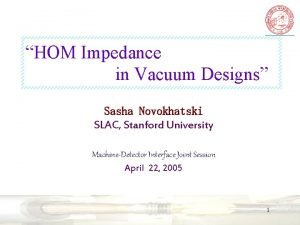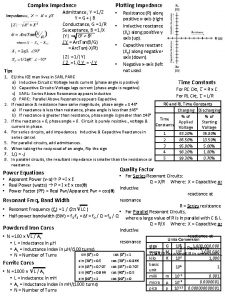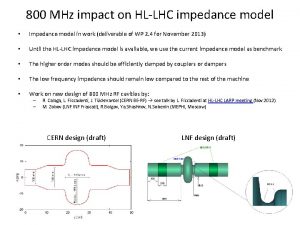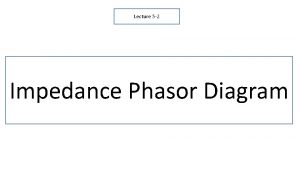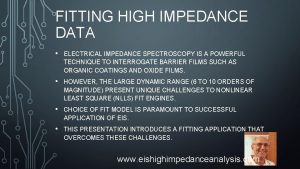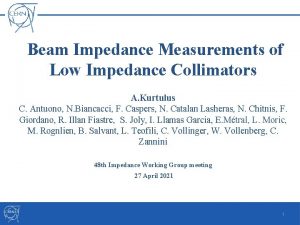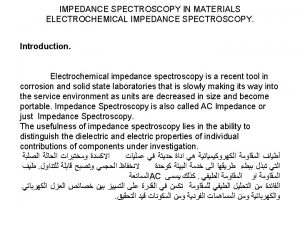LATEST ESTIMATES OF COLLIMATOR IMPEDANCE EFFECTS E Mtral


























- Slides: 26

LATEST ESTIMATES OF COLLIMATOR IMPEDANCE EFFECTS E. Métral for the RLC team u u Name given by Vos 2003 but effect already in Burov-Lebedev 2002 Reminder: A new physical regime for LHC “Inductive by-pass” New results since my LTC talk on 08/12/04 § Measurements • Coherent tune shift from a LHC prototype collimator at the SPS in 2004 • Transverse impedance from collimator bench measurements using 1 wire in 2005 (by F. Caspers and T. Kroyer) § Theory • Zotter 2005’s formula + extension of its validity (in 2005) • GSI result for a LHC collimator (EPAC 06) § Effect of chromaticity and scans vs. gap, bunch spacing and bunch length § TCT and TCLI issue Elias Métral, LHC collimation working group meeting, 17/07/06 1

Reminder: A new physical regime for LHC “Inductive by-pass” u First unstable betatron line u Skin depth for graphite (ρ = 10 μΩm) u Collimator thickness One could think that the classical “thickwall” formula would be about right Elias Métral, LHC collimation working group meeting, 17/07/06 2

u In fact it is not The resistive impedance is ~ 2 orders of magnitude lower at ~ 8 k. Hz ! A new physical regime was revealed by the LHC collimators Usual regime : New regime : This inductive by-pass effect is therefore observed even with a single layer extending up to infinity Elias Métral, LHC collimation working group meeting, 17/07/06 3

New results since my LTC talk on 08/12/04 MEASUREMENT 1 u Coherent tune shift from a LHC prototype collimator at the SPS in 2004 Zimmermann et al. , EPAC 06 This nonlinear wake of FZ will not play an important role in the LHC This meas. can be fully explained but DOES NOT ADDRESS the issue of the inductive by-pass effect Elias Métral, LHC collimation working group meeting, 17/07/06 4

MEASUREMENT 2 u Transverse impedance from collimator bench measurements using 1 wire in 2005 From theory This meas. can be reasonably explained but DOES NOT ADDRESS the issue of the inductive by-pass effect as the frequency range is too high (from 57 MHz to 1. 4 GHz) Classical regime only! Elias Métral, LHC collimation working group meeting, 17/07/06 5

ZOTTER 2005’S THEORY CERN-AB-2005 -043 u Zotter 2004’s results revealed an impedance ~ 100 times higher at 8 k. Hz than the one from Burov-Lebedev (BL) / Vos / Tsutsui This has been understood (error in the Mathematica Notebook) u Zotter 2005’s formula for the transverse RW impedance is more precise than the one of BL in 1 aspect He considers both TE and TM modes, whereas BL considers only TM mode u Using Zotter’s formalism I extended his formula (see CERN-AB-2005084) in 2 aspects. The new formula is now valid § Without making the “low-frequency” approximation § Without assuming (necessarily) a good conductor for the first layer This new Zotter 2005’s formula is therefore more “precise” than the one from BL in 3 aspects Elias Métral, LHC collimation working group meeting, 17/07/06 6

Elias Métral, LHC collimation working group meeting, 17/07/06 7

APPLICATION OF THE NEW ZOTTER 2005’S FORMULA IN THE CASE OF A SPS MKE KICKER By F. Caspers and T. Kroyer Theory plotted before the measurements! Elias Métral, LHC collimation working group meeting, 17/07/06 8

GSI RESULT FOR A LHC COLLIMATOR (EPAC 06) “Transverse Coupling Impedances from Field Matching in a Smooth Resistive Cylindrical Pipe for Arbitrary Beam Energies” by A. Al-Khateeb, R. W. Hasse, O. Boine-Frankenheim, Wafa M. Daqa, I. Hofmann Elias Métral, LHC collimation working group meeting, 17/07/06 9

u Very different results between the 2 approaches !!! u The new result from GSI exhibits 3 main differences § Both 0 real AND imaginary parts of the impedance at very low frequency § A constant imaginary part of the impedance at high frequency § A peak impedance more than 100 times smaller than ours If it is true (one has to look at it in detail), this could have a major impact on the LHC project and in particular on the collimation project as the resistive-wall impedance would no longer be a problem !!! Elias Métral, LHC collimation working group meeting, 17/07/06 10

EFFECT OF CHROMATICITY From Landau octupoles at max. TOP ENERGY Stability diagrams (X-plane) Mode 0 Mode 1 Mode 2 Mode 3 Elias Métral, LHC collimation working group meeting, 17/07/06 11

Single-bunch X-plane Elias Métral, LHC collimation working group meeting, 17/07/06 Coupled-bunch 12

Stability diagrams (Y-plane) Mode 0 Mode 1 Mode 2 Mode 3 Elias Métral, LHC collimation working group meeting, 17/07/06 13

Elias Métral, LHC collimation working group meeting, 17/07/06 14

From nonlinearities + space charge (2 D) INJECTION ENERGY Stability diagrams (X-plane) Mode 0 Mode 1 Mode 2 Mode 3 Elias Métral, LHC collimation working group meeting, 17/07/06 15

INJECTION ENERGY Stability diagrams (Y-plane) Mode 0 Mode 1 Mode 2 Mode 3 Elias Métral, LHC collimation working group meeting, 17/07/06 16

Elias Métral, LHC collimation working group meeting, 17/07/06 17

SCAN VS. GAP, BUNCH SPACING AND BUNCH LENGTH u 1) SCAN VS. GAP § 1. 1) For n most critical • The real part of the tune shift scales between 1/b^2 and 1/b^3 (it is • about 1/b^2. 5) The imaginary part of the tune shift scales as 1/b^2 § 1. 2) For n = 3499 • The real part of the tune shift scales between 1/b^2 and 1/b^3 (it is • about 1/b^2. 5) The imaginary part of the tune shift scales (roughly) as 1/b § Reminder: What is called the most critical (coupled-bunch) mode n is the (usual) one giving the largest imaginary part of the tune shift, but n = 3499 (= M - [Qx] - 1) gives the largest real part, and if we take the modulus it is the latter one which is the most critical Elias Métral, LHC collimation working group meeting, 17/07/06 18

u 2) SCAN VS. BUNCH SPACING (assuming a constant bunch intensity) § The real part of the tune shift is almost constant (it is the "famous“ § u almost single-bunch effect due to the inductive bypass) The imaginary part of the tune shift scales as ~ 1/bunch spacing 3) SCAN VS. BUNCH LENGTH § 3. 1) For n most critical • The real part of the tune shift scales as ~ 1/(bunch length)^(1/4) • The imaginary part of the tune shift is constant § 3. 2) For n = 3499 • The real part of the tune shift scales as ~ 1/(bunch length)^(1/5) • The imaginary part of the tune shift is constant Elias Métral, LHC collimation working group meeting, 17/07/06 19

TCT AND TCLI ISSUE (1/5) u Per beam, there are § 1 § § u TCTH and 1 TCTV at each interaction point 4 TCTH and 4 TCTV The 4 TCTH are all of the same type (1 -beam pipe) 2 TCTV at D 2 (i. e. where the 2 beams are well separated 1 -beam pipe) at points 1 and 5 2 TCTV at D 1 (i. e. where the 2 beams are not separated 2 -beam pipe and large cavity created) at points 2 and 8 In addition there is also 1 TCLI (TCLIA. 4 R 2. B 1) used only at injection (1 -beam pipe) and 1 TCLI (TCLIB. 6 R 2) used also only at injection (but 2 -beam pipe) The 4 TCTH, the 2 TCTV at D 2 and the TCLIA. 4 R 2. B 1 are all (the 7) of the same type (= 1 -beam TCS-type device), and of the same type of the collimator prototype used in the SPS in 2004. For this we have measurements of the trapped modes by FC and TK, and simulations by AG. Conclusion: All this is known and OK Elias Métral, LHC collimation working group meeting, 17/07/06 20

TCT AND TCLI ISSUE (2/5) u The new result is for the 2 TCTV at D 1 and for the TCLIB. 6 R 2 (2 -beam devices), which have been followed-up by AG. And this is for this 3 devices (2 used at top energy and 1 used at injection) that the Broad-Band impedance is quite high. For the trapped modes we think we will be able to damp them with ferrites (opening the RF bypass for the ferrite to be effective or keeping the RF bypass but creating a small cavity to put the ferrite) Elias Métral, LHC collimation working group meeting, 17/07/06 21

TCT AND TCLI ISSUE (3/5) u Conclusion: A (full) gap of 12 mm is needed for 2 devices and 30 mm in case of more than 2 devices Elias Métral, LHC collimation working group meeting, 17/07/06 22

TCT AND TCLI ISSUE (4/5) u 12 mm is chosen to have a BB impedance per device which is about 1% of the total BB impedance of the design report (j 2. 67 MΩ/m at top energy), i. e. ~ j 0. 02 MΩ/m in the previous plot u However this result is obtained for the nominal case where β βav (~ 70 m) u If, as discussed with RA, the beam is squeezed in 2 and 8, the β function will increase to ~ 660 m, i. e. by a factor 10 In this case, the impedance will increase by a factor 10 The impedance has to be reduced by a factor 10 The full gap has to be increased from 12 mm to 30 mm (see previous plot). In this case the BB impedance is similar to the 1 -beam TCS-type device This limits the squeeze in 2 and 8* * Reminder: The TCTV primary function is shadowing the triplet, which half aperture is ~ 10 mm It should be at ~ 8 mm (half gap) maximum to play is role Elias Métral, LHC collimation working group meeting, 17/07/06 23

TCT AND TCLI ISSUE (5/5) u The TCLI is used only at injection and to protect the arc § The TDI alone protects until ~ 50% of the nominal intensity § For higher intensities, the TCLI (graphite) is absolutely needed u A full gap of 12 mm is also chosen for the TCLIB. 6 R 2 to have a BB impedance which is the same percentage of the total BB impedance of the design report (j 1. 34 MΩ/m at injection) as for the 2 TCTV at D 1 at top energy Elias Métral, LHC collimation working group meeting, 17/07/06 24

CONCLUSION (1/2) u Zotter 2005’s formula has been compared to other approaches from Burov-Lebedev 2002, Tsutsui 2003 (theory and HFSS simulations) and Vos 2003 Similar results obtained in the new (Burov-Lebedev 2002) low-frequency regime u The new (extended) Zotter 2005’s formula has been used to compute the transverse impedance of a SPS MKE kicker and a very good agreement has been obtained with 2 -wire measurements from F. Caspers and T. Kroyer “Very” confident in our impedance model! u … Even if new results from GSI published at EPAC 06 reveal that the impedance could be very different and much smaller To be analyzed in detail Elias Métral, LHC collimation working group meeting, 17/07/06 25

CONCLUSION (2/2) u Coherent tune shift measurements from a LHC prototype collimator at the SPS in 2004 are in agreement with our theoretical predictions but do not address the issue of the inductive by-pass effect u Transverse impedance from collimator bench measurements using 1 wire in 2005 (by F. Caspers and T. Kroyer) are also in agreement with our theoretical predictions but do not address the issue of the inductive by-pass effect u Coupled-bunch instability induced by the collimators § At injection Should be damped by a feedback (which should be able to damp instabilities with rise-times of few tens of ms) § At top energy Should be damped by octupoles + (controlled) chromaticity (but then other problems may happen…) u Estimated max. intensity? Few tens of % of the nominal one… A good control of the tunes and chromaticities will be needed to increase the intensity Elias Métral, LHC collimation working group meeting, 17/07/06 26
 Vector impedance meter determine impedance in
Vector impedance meter determine impedance in Collimator of x ray tube
Collimator of x ray tube Collimator types
Collimator types Collimator
Collimator Collimator of x ray tube
Collimator of x ray tube Collimator
Collimator Least square property
Least square property Tom murphy do the math
Tom murphy do the math Who global estimates on prevalence of hearing loss 2020
Who global estimates on prevalence of hearing loss 2020 Creative industries economic estimates
Creative industries economic estimates The account analysis method estimates cost functions
The account analysis method estimates cost functions Fermi estimates
Fermi estimates Who global estimates on prevalence of hearing loss 2020
Who global estimates on prevalence of hearing loss 2020 Building maintenance cost estimates
Building maintenance cost estimates Marquis company estimates that annual manufacturing
Marquis company estimates that annual manufacturing Jessie estimates the weight of her cat
Jessie estimates the weight of her cat Job order cost system
Job order cost system Latest subject integrity
Latest subject integrity Florence and the machine video
Florence and the machine video Latest electronics and information technology in odisha
Latest electronics and information technology in odisha Pressurized hydrant system malaysia
Pressurized hydrant system malaysia Relocation trends
Relocation trends Oracle apex 19 new features
Oracle apex 19 new features Praying for philippines
Praying for philippines What is informal letter
What is informal letter Dd 577 usmc
Dd 577 usmc Sspc-pa 2
Sspc-pa 2
